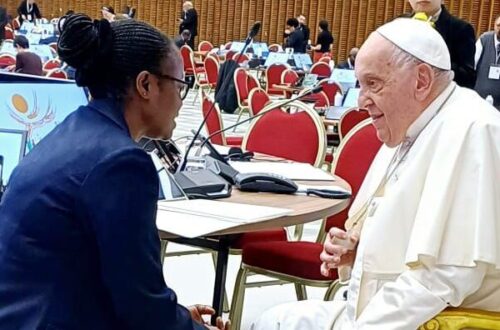The heavy rains and effects of cyclone Freddy were intensely felt in the Area of Mozambique. Particularly affected were the provinces of Maputo, Inhambane and Gaza in the South and Zambezia, and Sofala in the central part of the country. Other regions in Freddy’s path of destruction included Marromeu, Tete in the district of Mutarara, Manica- Guro and Tambara.
The precipitation that occurred on March 4 and during the days that accompanied Cyclone Freddy brought loss of life, and damage to property and material goods. As most of the buildings are made of precarious materials, many were destroyed by the gale force winds of the cyclone. The amount of rainfall had a huge impact on water stagnation, as there is not sufficient drainage. This situation has affected the health of the population of mozambique, bringing an outbreak of water-borne diseases such as cholera, malaria, and parasites.
There is a shortage of basic necessities, especially drinking water, resulting in endless lines. Also, flood waters block access roads. In all the provinces struck by Cyclone Freddy, there have been serious consequences to the lives of people, including despair.


Whenever it rains, the access roads in this state are impassible, make it practically impossible for vehicles to circulate.




A lot of work ahead
Freddy was one of the strongest cyclones in recorded history and may be the longest lasting tropical storm, according to the World Meteorological Organization. The pictures below show the devastation. It only took a few days of heavy rains for many houses, like these, to suffer from structural and sanitation problems.
Obstacles to the daily routine of families have been affected by Cyclone Freddy. Many families have spent sleepless nights trying to cope with the storm. As soon as the rains passed, they set to work cleaning houses and belongings. In the days that followed, daily life was made more difficult by stagnant waters, adding to the totality of the tragedy.
The situation is critical in Zambezia province. These images below show the extent of the damage. The Zambezia Province was cut off from all communications with other regions in the country during the storm.
In Mozambique alone, 300,000 people have already been affected by Freddy and the number is expected to increase greatly. A cholera outbreak now aggravates the situation. An estimated 9,000 cases have been identified, with more than half a million people being at risk of cholera in Mozambique, according to the Office for the Coordination of Humanitarian Affairs.
Freddy hit central Mozambique a second time on March 12, tearing roofs off buildings and causing widespread flooding around the port of Quelimane, before moving inland towards Malawi with torrential rains that caused landslides. The situation is serious and cause for worry for all Mozambican citizens.

These images below are of the building of the sisters’ community house, Jean Gailhac in Quelimane, where roofs on the terrace of the house were blown away by cyclone Freddy.






These families have lost all their possessions, are homeless and are asking for help, as are all the others in the same situation.


Provinces of Mozambique are: Cabo Delgado, Gaza, Inhambane, Manica, Maputo City, Maputo, Nampula, Niassa, Sofala, Tete and Zambezia.










